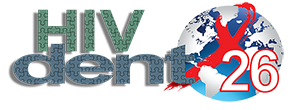Renslow Sherer, MD
Director, International HIV Training Center
Professor of Medicine
University of Chicago
Chicago, Illinois
The most common COVID-19 questions that I hear from persons with HIV (PWH) are:
-
“Am I at a greater risk of more severe COVID-19 illness?”
-
“How can I protect myself and my loved ones from contracting SARS-CoV-2 infection (ie, COVID-19)?”
As more and more data become available, the answers to these questions are becoming clear.
Risk of Severe COVID-19 in PWH
The good news is that the answer to first question appears to be “no.” Several recent US cohort studies have found no evidence of more severe COVID-19 illness in PWH. The largest is the VA Cohort Study of 253 PWH and SARS-CoV-2 coinfection compared with 504 individuals with COVID-19 but with no HIV. In this study, the investigators found no differences in rates of hospitalization, ICU transfer, intubation, or death between the two groups. Based on this and other recent US studies, there is a consensus that PWH are not at increased risk of severe disease with COVID-19 in the United States because of their HIV infection. The DHHS guidelines, updated June 2020, state that data currently available “do not indicate that the disease course of COVID-19 is worse” in PWH and recognizes that PWH “who have COVID-19 have an excellent prognosis, and they should be clinically managed the same as persons in the general population with COVID-19.” However, many PWH are older and have comorbidities, such as diabetes, that may put them at higher risk for severe disease and, therefore, should continue to take precautions to minimize their risk of SARS-CoV-2 infection.
Standard Precautions to Prevent SARS-CoV-2
This brings us to the answer to the second commonly asked question: DHHS guidelines state that PWH should follow CDC recommendations to reduce their risk of SARS-CoV-2 infection. These include these simple measures, “The 3 Ws”:
In my opinion, handwashing has been given too little attention recently. I advise handwashing at least 3 times per day in addition to handwashing with every change of location and potential exposure. A recent study in the Lancet summarized the evidence that supports these 3 protective measures. Physical distancing was found to reduce the risk of exposure 4-fold, from 12.8% to 2.6%, and face masks were found to reduce risk 5-fold, from 17.4% to 3.1%. These data are powerful and persuasive that we can protect ourselves with simple measures. The same study also found that protective eye wear, such as shields or construction eye goggles for health workers in higher exposure settings, reduced risk by 3-fold, from 16.0% to 5.5%. For anyone working in settings in which droplet exposures may be more common and risk aversion is impractical, protective eye wear is an additional way to reduce SARS-CoV-2 infection via the mucous membranes in the eyes with a strong evidence base to support it, as we see now on public transportation and at checkout counters.
The CDC recently noted that there is growing evidence that coronavirus can be spread through airborne transmission of tiny droplets known as aerosols that linger in the air longer than large droplets. During certain activities, such as singing, or in poor ventilation, the virus can transmit long distances through aerosols, as outlined in this recent comprehensive review.
Preventing COVID-19 in PWH
PWH can further protect themselves by carrying a ready supply of hand sanitizer with them and by frequently cleaning high-touch surfaces. Other suggestions are to avoid large crowds and public transportation (when possible) and to avoid prolonged indoor activities. Because not all PWH can avoid some degree of risk due to work requirements or public transportation, employers and transportation officials should work to reduce COVID-19 risk in these settings with barrier protection, handwashing materials, and health messaging. It is important to stay informed of the local trends in communities because a single local outbreak can markedly change the level of local risk. Additional recommendations on minimizing risk from the updated DHHS interim guidance on COVID-19 and PWH include:
-
Maintain stable ART: increase the supply on hand to at least a 30-day supply and ideally a 90-day supply and delay planned switches; do not switch ARVs for the purpose of preventing or treating SARS-CoV-2
-
Weigh risks and benefits of attending in-person, HIV-related clinic appointments: Factors to consider include extent of local COVID-19 transmission, HIV disease status, and overall health
-
Postpone routine medical and laboratory visits for persons with suppressed HIV-1 RNA in stable health; consider telephone or virtual visits for nonurgent care and adherence counseling
Working together, we can effectively prevent SARS-CoV-2 transmission and bring an end to COVID-19.



